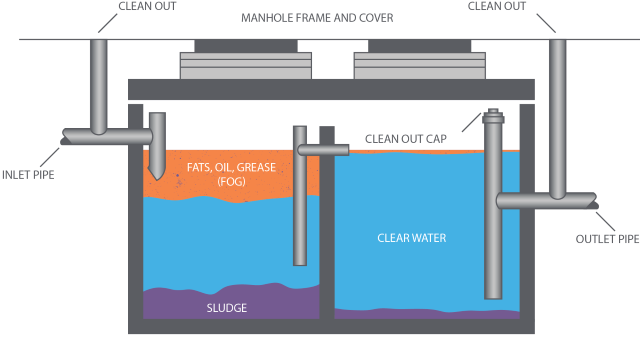Grease Trap vs. Grease Interceptor
What They Are, How They Work and How They’re Different
Grease traps were invented in the 1880’s, and the technology has reminded nearly unchanged ever since. Whether the unit is a grease trap or grease interceptor, the technology works the same. Fats, oil and grease (FOG) float to the surface, leaving the wastewater to flow into the sewage system.
According to Universal Plumbing Code, “a grease trap/grease interceptor is a plumbing device that is installed in a sanitary drainage system to ‘trap’ or ‘intercept’ non-petroleum FOG from a wastewater discharge.” Wastewater flows from the sink of drain into a tank. As the wastewater cools, the FOG hardens and the food solids (sludge) settle. The FOG fills the grease trap from the top down, displacing the wastewater from the middle of the grease trap and into the sanitary sewer or septic system. A grease interceptor works the same way, but at a larger scale:

The difference between a grease trap and a grease interceptor is the flow rate of wastewater that the device can handle. A grease trap works well with a lower volume of flow; less than 50 gallons per minute. Large-scale establishments with a higher volume of flow; more than 50 gallons per minute, will need a grease interceptor, as they are better equipped to handle the extensive FOG that flows through the device.
Top restaurant chains turn to us for their grease management. So do the largest grocery chains. In addition, thousands of regional, independent and single-location businesses count on Liquid Environmental Solutions to service their grease traps and grease interceptors. Regardless of the size of your operation or the scope of your needs, you can count on Liquid Environmental Solutions to provide an exemplary level of service, professionalism and expertise. Learn more here.
